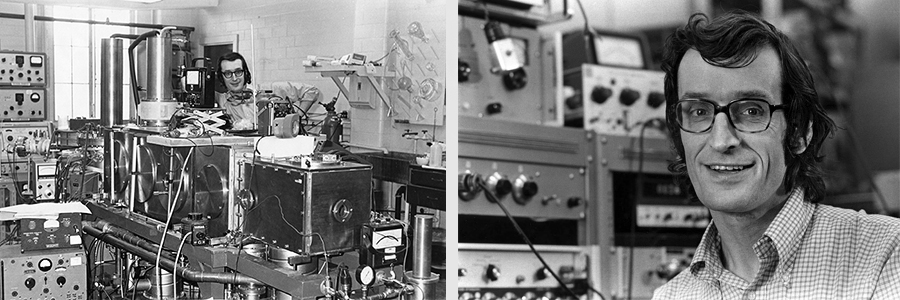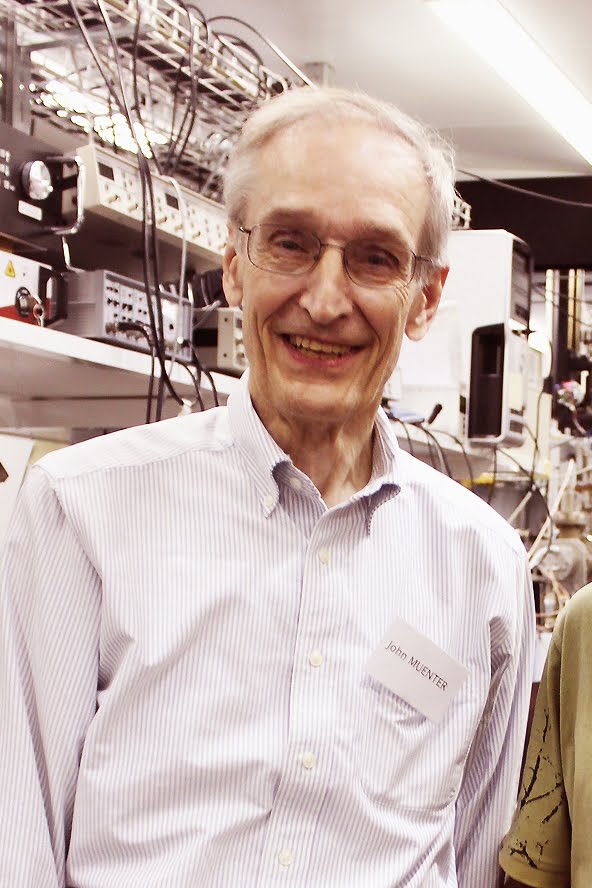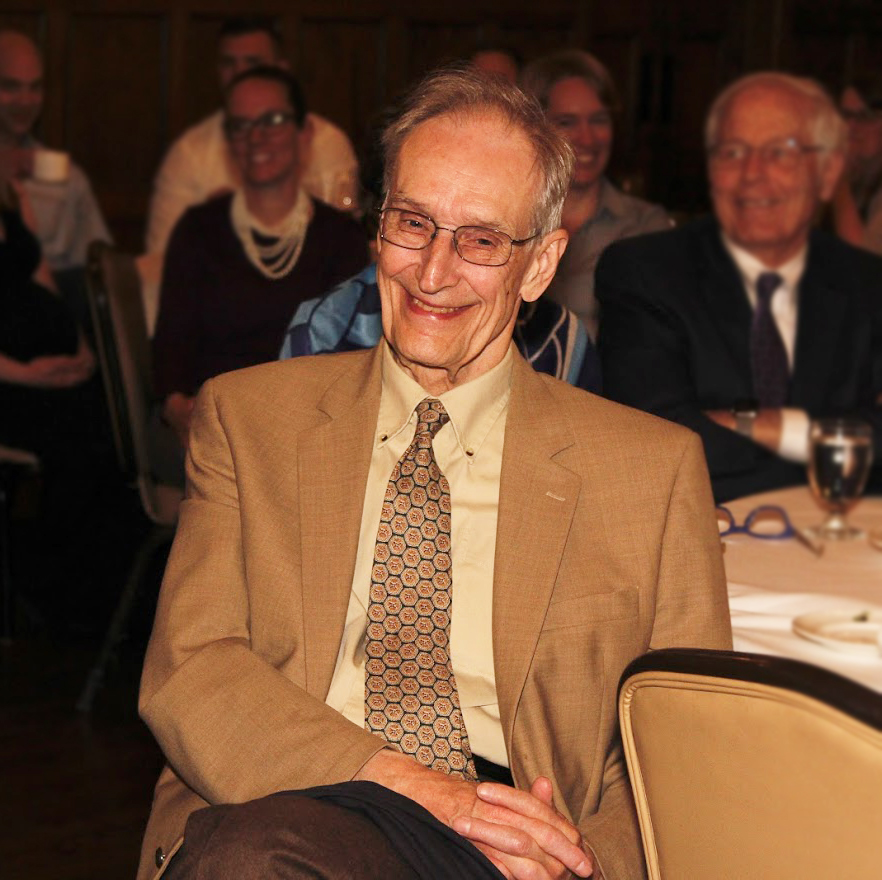Department News
Fifty Years of Research in the University of Rochester Chemistry Department
 Professor John S. Muenter recently collaborated with several others on an article titled, “Photodissociation transition states characterized by chirped pulse millimeter wave spectroscopy”, which was published in PNAS. John stated this is probably the last publication there will be with his name on the author list, and that “it has been a good run” since his first published paper in the early 60's.
Professor John S. Muenter recently collaborated with several others on an article titled, “Photodissociation transition states characterized by chirped pulse millimeter wave spectroscopy”, which was published in PNAS. John stated this is probably the last publication there will be with his name on the author list, and that “it has been a good run” since his first published paper in the early 60's.
John arrived at Rochester in 1969 after he had already achieved a significant reputation as a microwave spectroscopist. He received his B.A. in physics at Kenyon College in 1960 and his Ph.D. in 1965 under the direction of V.W. Laurie at Stanford. Following his graduate work there, he joined the world-renowned research group of William Klemperer at Harvard as a National Institutes of Health Postdoctoral Fellow from 1966-1968. There he began to study high-resolution molecular spectroscopy with molecular beam electric resonance methods. That work provided the basis for John’s research at Rochester, and one of his early contributions on the structure of the water dimer, is still considered a standard in the field. As tunable infrared lasers became more widely available, John used their capabilities to study properties of vibrationally-excited species, including spectra of van der Waals molecules and dipole moments of molecules in excited states.

An important part of John’s research has come from interaction with researchers at other institutions. He has enjoyed lengthy international collaborations with Brian Howard at Oxford and Thomas Rizzo at Lausanne. He also collaborated on several occasions with Mark Marshall (B.S. ’79), Professor of Chemistry at Amherst College, who completed his senior research with John as an undergraduate at UR. John “officially” retired after 38 years of faculty service in the Chemistry Department in 2007, but his research continued on through these international collaborations. John’s final collaboration has been with Bob Field of MIT; it began in 2010 and is just now ending. Over the last 10 years John has spent six weeks a year at MIT working with Bob’s graduate students and postdocs. Several papers have been published from these efforts, with the most recent, and probably his last, publication appearing in the Proceedings of the National Academy of Sciences (USA) in the first edition of 2020. John’s significant publication record of more than 100 papers published in scientific journals stand as testimony to his contributions to education at all levels.
 “The faculty, students and postdocs at Rochester who got to know John during his remarkable 50-plus year career have all benefited immensely both personally and professionally”, said Todd Krauss, Chair of the UR Chemistry Department. “As I tour the country talking to our alumni, it is clear how much of a positive impression John had on their overall educational experience at Rochester. I want to wish John many congratulations on an outstanding career!”
“The faculty, students and postdocs at Rochester who got to know John during his remarkable 50-plus year career have all benefited immensely both personally and professionally”, said Todd Krauss, Chair of the UR Chemistry Department. “As I tour the country talking to our alumni, it is clear how much of a positive impression John had on their overall educational experience at Rochester. I want to wish John many congratulations on an outstanding career!”
John also applied his masterful experimental skills to the undergraduate program at Rochester, developing a physical chemistry laboratory in collaboration with Robert Kreilick that is viewed by UR chemistry majors as a “rite of passage” and by colleagues across the country as the “right way to do physical chemistry lab”. Many of our former undergraduates who are now faculty members at institutions such as Amherst, Chicago, Penn State, and Wisconsin remember “Lab 2” as a formative experience in their own careers, and have sought to emulate the course at their own institutions. John’s significant publication record in journals, as well as the Lab 2 manual, the “Green Monster”, stand as testimony to his contributions to education at all levels. During his time at Rochester he supervised ten Ph.D. students, ten postdoctoral fellows and hundreds of undergraduate students over the years.
John was also an outstanding mentor to young faculty. Jim Farrar commented that “John's office door was always open, and he always had time to offer advice on an experiment, on how to express an idea in a publication in preparation or a research proposal more clearly. I always admired John's grasp of how things work. My own career has been enriched by John's insights, his intellectual honesty, his wry sense of humor, and his abiding friendship."
Sadly, John’s wife Annabel passed away in May 2010 after a 35 year career at Eastman Kodak as a photographic scientist after receiving a Ph.D. in Chemical Physics from Harvard. They both took great pride in the fact that their daughter, Annabel Edwards, continues the family tradition in chemical education at Denison University in Ohio as an Associate Professor of Chemistry.
As John reflects on his 50 years long career: “I have very few regrets about my professional career. I am proud of my slightly over 100 publications. While it is difficult to judge the impact of one’s published work, I am delighted that these papers have been cited by other authors more than 6000 times. Of much greater importance to me are a lifetime of wonderful colleagues: Students, postdocs, Rochester faculty, and a host of molecular spectroscopists throughout the world.”

Related Links...
- “Photodissociation transition states characterized by chirped pulse millimeter wave spectroscopy”, PNAS, Jan 2020
- Muenter Faculty Page
